Shibori at Slowstitch Studio
Japanese Indigo Dyeing - Slowstitch Studio
While enjoying time around Chiang Mai’s creative scene in recent years, we have admired the work of Serge and Ann at Slowstitch Studio. They exhibit creativity and finesse in shibori and natural dyed fabrics that are renowned for their warmth and individuality. Slowstitch Studio creates an individual range of wall art decor, pillows, cushions and scarves.
We spent several delightful hours with this lovely couple in their home studio just outside Chiang Mai recently. They humbly showed us around their indoor-outdoor studio, explaining the materials, preparation and processes that go into their creations. We also met some of their assistants, experts in the fields of fabric marking and stitching.
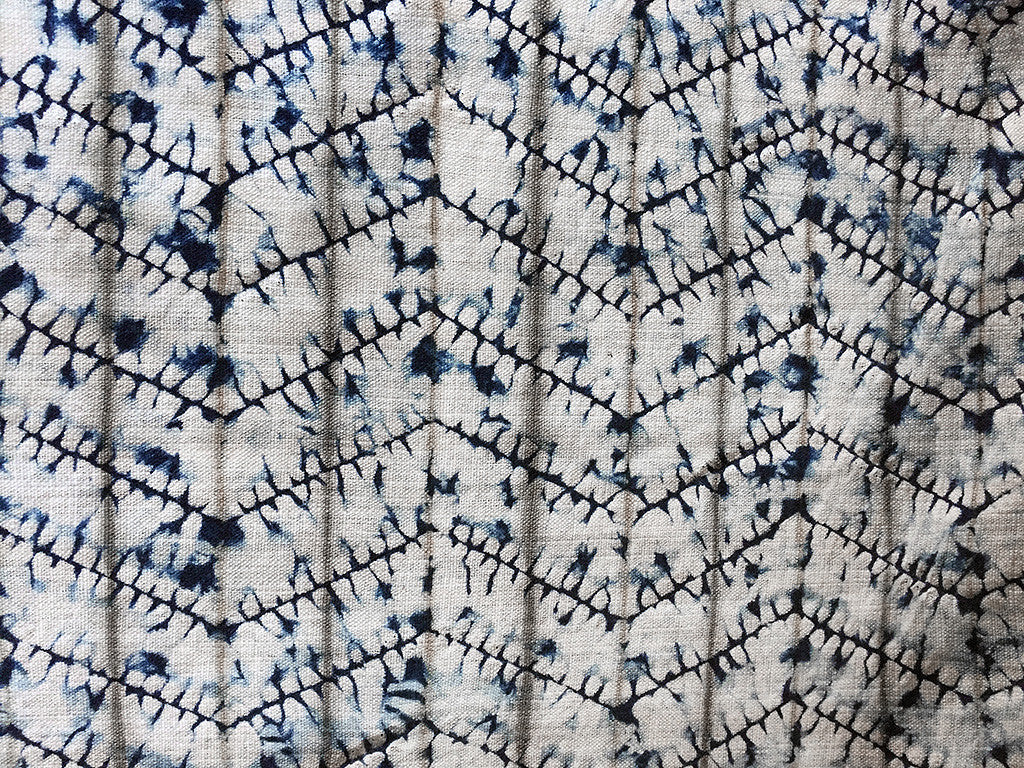
Both Serge and Ann have long had a passion for textile design and love the soothing and emotional process of working with their hands. They met while studying in Japan – with a traditional weaver and dyer in indigo and natural dyes. Their time spent in the mountains of Japan with their teacher, who is a also a curator of silk worms and indigo plants, allowed them to enjoy the sensory and emotional experience of physically creating their own cloth, while also studying the fascinating range of traditional Japanese textiles.
A quick outline of their process -
Fabric Selection
The couple uses natural fibres - cotton, silk and hemp, preferring hand woven and hand spun fabrics as they absorb the dye better. Differences are seen as different fabrics exhibit variations of line when folded, stitched or compressed, depending on the thickness of the fibres and the material – cotton, silk, hemp etc.
Preparing the fabrics
All the fabrics are carefully prepared by boiling in soda ash and detergent for about an hour - necessary to remove oils and starch collected from the spinning and weaving process, as these can inhibit the absorption of the dye. Mordants are also used with natural dyes to help the dye penetrate the fibres of the fabrics, and include ferrous, alum and Myrobalan seed or powder, which gives a slightly yellow colour and adds tannin before dyeing. Preparation requires soaking, washing and drying before the fabrics are marked up with the pattern.
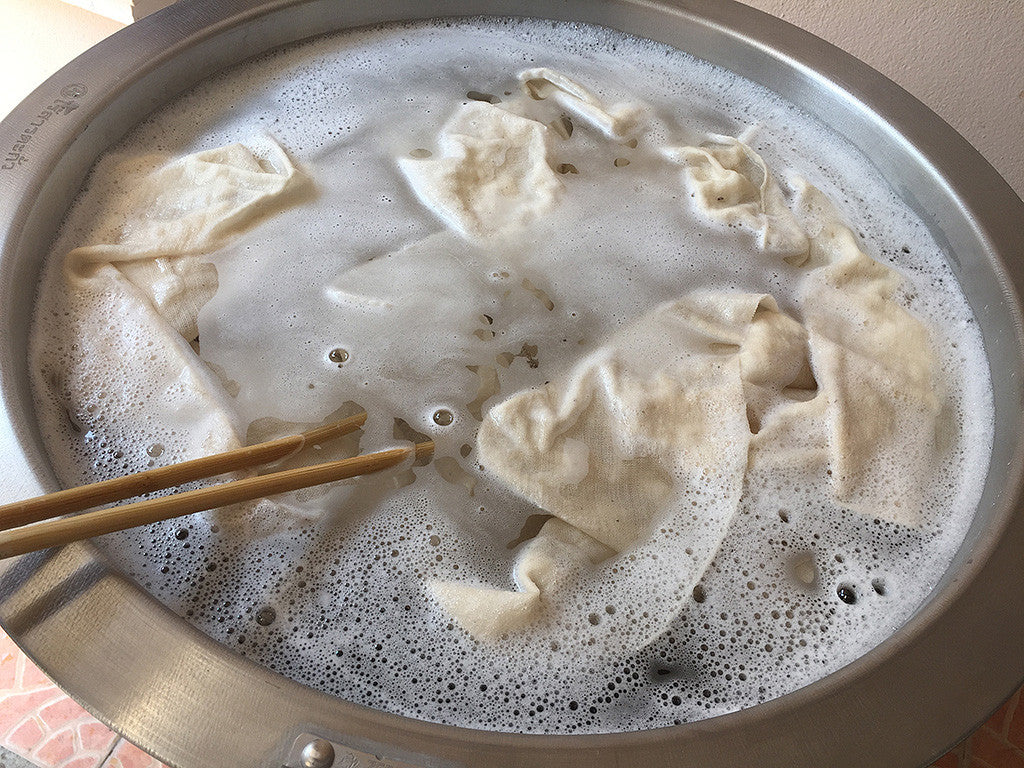 Pattern Marking and Stitching
Pattern Marking and Stitching
At Slowstitch Studio, stitching is mostly used as a means of creating design, as it is such a precise art form - creating less randomness than folding, which produces a somewhat less structured pattern.
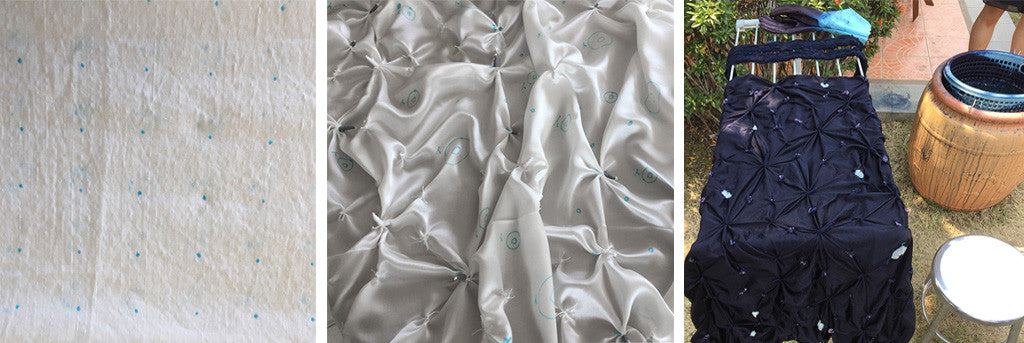
The design is meticulously transferred to the fabric with a washable marker in preparation for the hand stitching - very time consuming as it has to be completely accurate. The design leaves some areas susceptible to the dye, while compressed areas will not allow dye penetration. The design is then stitched according to the marks that have been applied to the fabric - this can take days to complete for a complex pattern, taking care not to tangle any threads together.
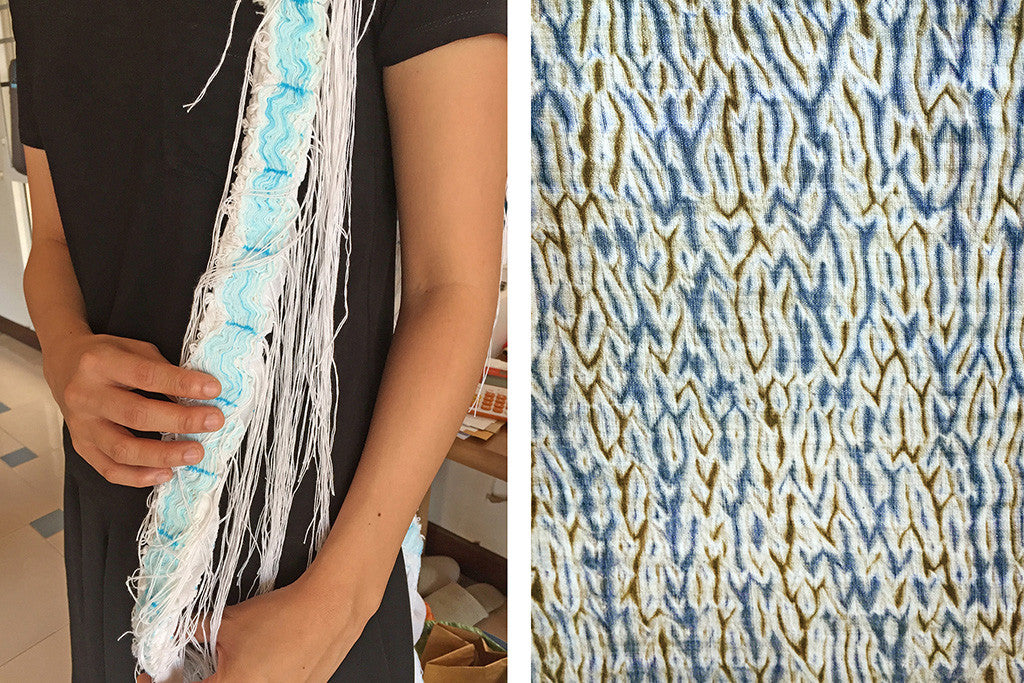
Thread pulling
After stitching, the threads are pulled very tightly to compress the fabric and it starts to look quite strange at this stage! Different tension results in some dye getting into different areas, so this is also used to add variations. After pulling up the threads, the fabric is soaked in water before dyeing.
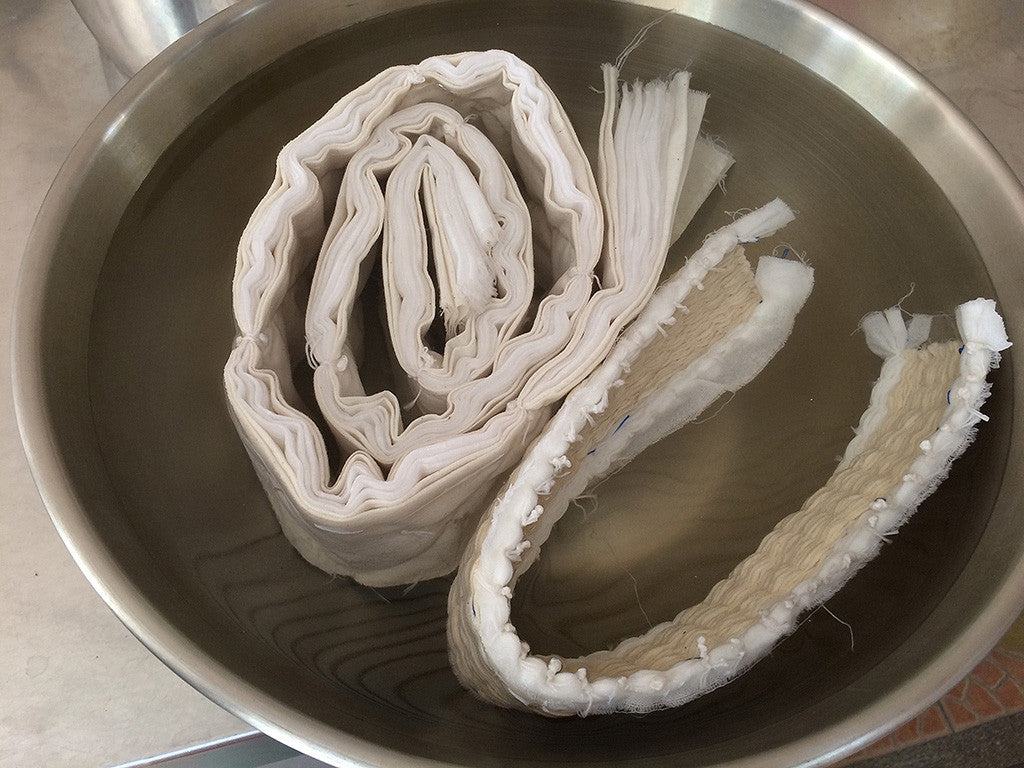
Indigo and Natural Dyeing
All of the colours used in the dyeing process are extracted from botanical sources and their non-toxic methods result in minimal environmental impact. Natural dye sources include turmeric, lac stick, sappan wood, mangosteen powder and fruit, coffee grounds, indigo and even onion skins.
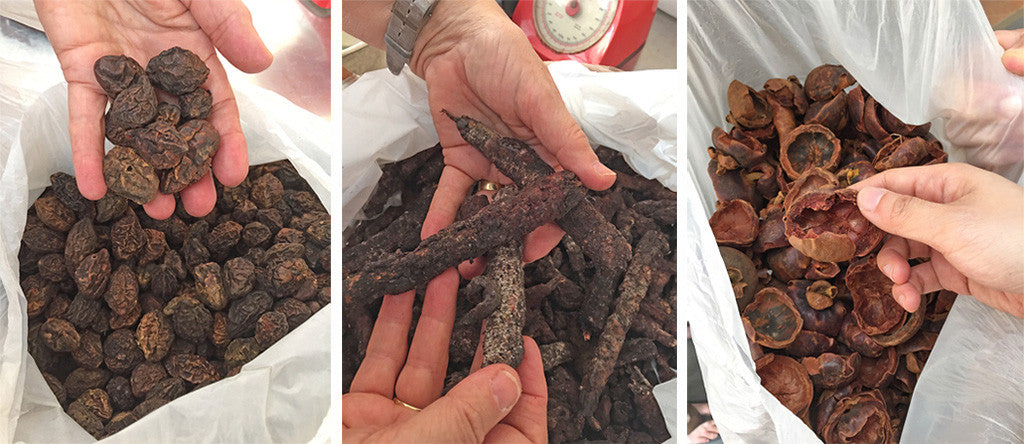

Serge and Ann keep indigo vats in their garden and tend them carefully to ensure that the right balance of pH and dye intensity is maintained. Their methods involve natural dyes, with some chemical balancing where necessary to ensure the best dye bath is available for their creations. The fabric is dyed in stages, allowing time for oxygenation in between each dipping. Sometimes fabric needs to be dipped 10 or more times to attain the best colour.
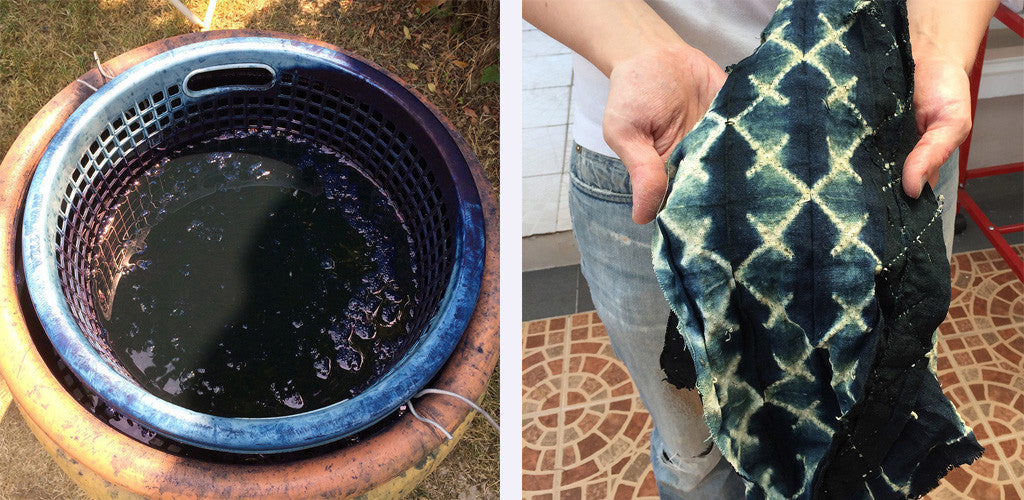
Thread cutting
After dyeing, the threads are cut to magically reveal the design, taking care not to cut any fabric - the dark wet mass of threads can be quite confusing! The fabric is then washed and dried.
Some of Serge and Anne’s creations require restitching to create a particular pattern, so after dyeing, the marking, stitching and dyeing process is repeated, sometimes using a different colour and contrasting design. It can easily take a week or longer just to dye one yard of fabric in this way and their dedication is very apparent at this stage!

Creative Designs
Normally shibori, by its nature has limitations – so how to make a new design? Serge and Ann love a challenge! We were impressed with their energy and bravery to explore new frontiers in shibori, venturing into and conquering complicated designs in creativity. The amount of time and effort that they put into creating a single piece is a huge investment, especially when you factor in the planning, stitching, tying, dyeing, untying and washing that goes into creating the pattern.
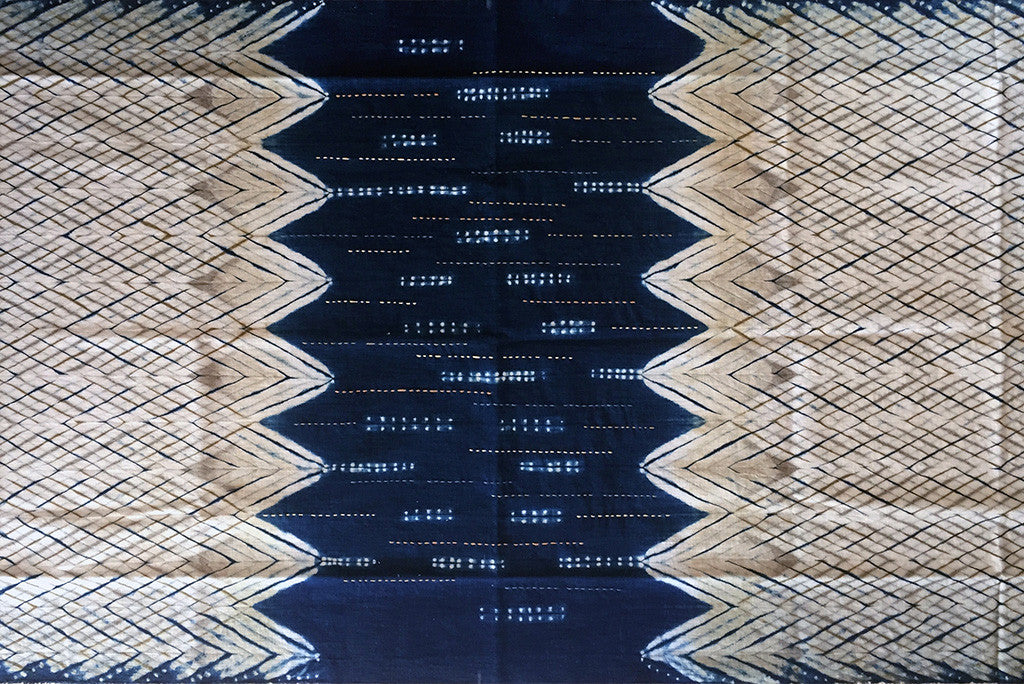
So who does what? – I got the feeling that Ann, with her background in textile design in London and computer aided design, likes her work to be precise but with some movement within the design.
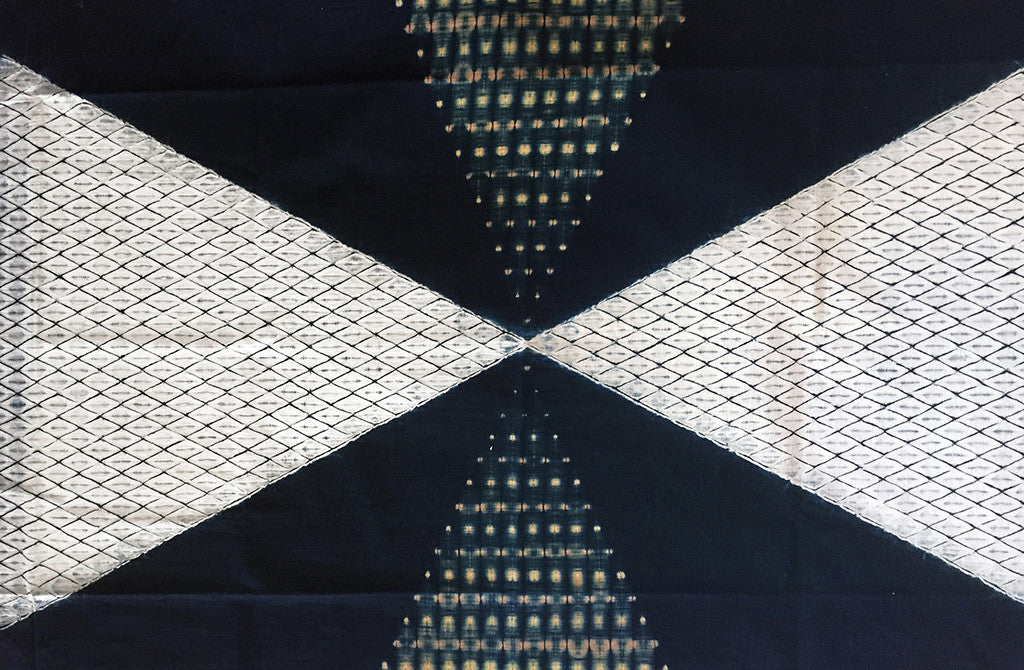
Serge, on the other hand, prefers his designs to be more controlled and produces very precise work wherever possible - aiming for perfection and developing his designs further.
Achievements and Recognition
Serge and Ann complement each other beautifully with their dedication to their craft - inspiring each other to new heights of creativity!
This modest young couple from Slowstitch Studio were winners in the craft design section at Chiang Mai Design Week in December 2016, and recently attended the International Innovative Craft Fair 2017 - both events where they have produced a spectacular display of their colourful and complex work.
Slowstitch Studio is on Facebook, Etsy, and their own website.

 We spent several delightful hours with this lovely couple in their home studio just outside Chiang Mai recently. They humbly showed us around their indoor-outdoor studio, explaining the materials, preparation and processes that go into their creations. We also met some of their assistants, experts in the fields of fabric marking and stitching.
We spent several delightful hours with this lovely couple in their home studio just outside Chiang Mai recently. They humbly showed us around their indoor-outdoor studio, explaining the materials, preparation and processes that go into their creations. We also met some of their assistants, experts in the fields of fabric marking and stitching.